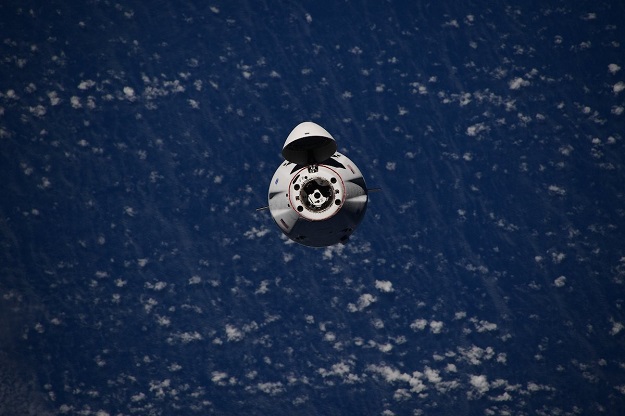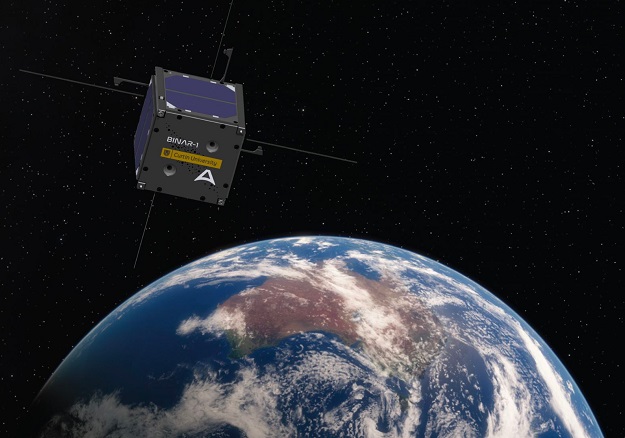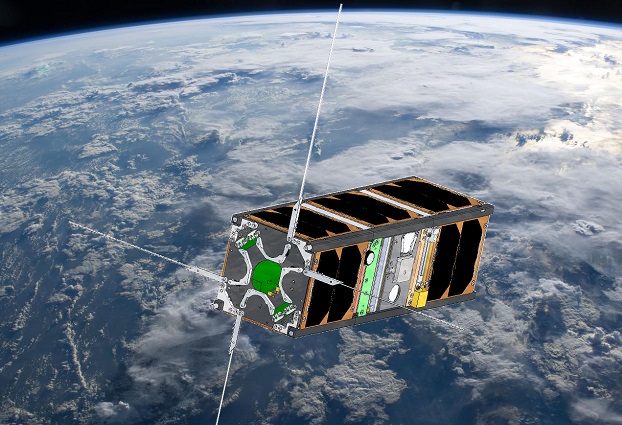
The SpaceX Cargo Dragon capsule carrying CUAVA-1 and Binar-1, pictured approaching the International Space Station on August 30. Credit: Thomas Pesquet/ESA/NASA.
Two Australian-designed and -built CubeSats have reached the International Space Station (ISS) aboard a SpaceX Dragon cargo spacecraft.
The Binar-1 and CUAVA-1 satellites will now wait their turn for deployment from the ISS and into their own orbits later this year.
Binar-1 is Western Australia’s first home-grown spacecraft, designed and built by staff and students from Curtin University’s Space Science and Technology Centre (SSTC) under a program run in partnership with Fugro and supported by the Australian Remote Operations for Space and Earth (AROSE).
The primary objective of the mission is to test all the critical spacecraft systems that will help with missions to the Moon. Two cameras on board Binar-1 will capture images of the WA coastline and relay them back to Earth.
“We will be able to control and command our missions from Perth through Fugro’s Australian Space Automation, Artificial Intelligence and Robotics Control Complex (SpAARC), which will use Binar CubeSats to test remote operation protocols on a spacecraft in orbit,” said SSTC Director and John Curtin Distinguished Professor, Phil Bland.

Artist’s impression of the Binar-1 satellite in orbit. Courtesy Curtin University.
“The Binar Space Program has six more launches planned over the next 18 months,” he added. “Our ultimate goal is to have a WA-built spacecraft at the Moon by 2025.”
“The launch of Binar-1 is our first real step towards that goal. Being able to build spacecraft affordably means that we can rapidly iterate technology, which is a key element in developing advanced systems for exploration, that then also benefit other industry sectors.”
CUAVA-1 is the lead project of the Australian Research Council Training Centre for CubeSats, Uncrewed Aerial Vehicles and their Applications (CUAVA). It will be the first spaceflight managed by Saber Astronautics through the Responsive Space Operations Centre (RSOC) in Adelaide.
The CubeSat’s four experimental payloads will give scientists and research students insights from near-Earth orbit during its 12-month mission, during which it will:
- Investigate Earth’s plasma environment and space weather using on board radiation detectors
- Observe Earth using novel imaging technology
- Test equipment designed for use in a future satellite that will search for signs of life on planets around Alpha Centauri, our nearest star system
- Link with the international amateur radio union for education and outreach.

Artist’s impression of the CUAVA-1 CubeSat in orbit. Courtesy University of Sydney.
“This mission shows that Australian universities are at the forefront of our emerging national space industry,” said the Director of CUAVA, Professor Iver Cairns from the School of Physics at the University of Sydney.
“Our CUAVA Training Centre is leading in the development of near-Earth space technology and is a critical link in training the next generation of space engineers and scientists.”
Stay up to date by getting stories like this delivered to your inbox.
Sign up to receive our free weekly Spatial Source newsletter.







